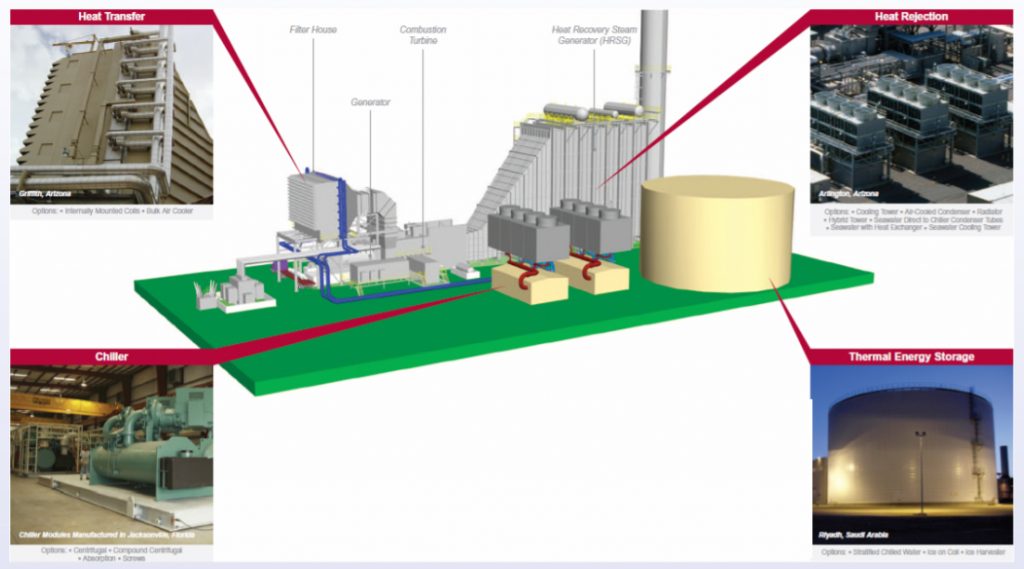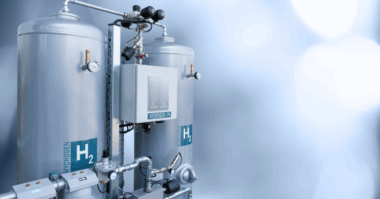Author: Rob Coffee, Vice President, Sales & Marketing, Proco Products Inc.
Now that you know the basic concepts behind how a combined cycle power plant works, let’s talk about some of the expansion joints you might find in a combined cycle power plant.
The majority of expansion joints in a combined cycle plant will be rubber spool-type expansion joints. Many of these rubber expansion joints are used in the pumping system that pushes circulating water throughout the facility. Circulating water pumps pull water into the combined cycle power plant where it is boiled to create steam, which then turns the turbine (as you saw in the video from GE). The steam returns to the condenser to transform back into water which is then recirculated. The rubber expansion joints will be found near the recirculating water pumps, the condensate pumps, and the condenser connections.
Water is also pumped to the cooling towers, where you will find rubber expansion joints at the inlet to the cooling tower cell. There tend to be multiple cells to every cooling tower, so you will typically find an expansion joint at the connection from the header pipe, or the pipe coming out of the ground, into the cooling tower. Expansion joints can also be found between the riser pipes and the cooling tower.
There are some areas where the water does not meet certain quality standards and it must be treated prior to entering a combined cycle power generating facility. In order to de-ionize the water, it must first be sent to a water demineralization building for purification. These “demist” buildings will contain several expansion joints in the tertiary pumping systems as well as pumping systems that may be working in tandem with the cooling tower.
You will find penetration seal expansion joints at the top and bottom of the heat steam recovery generator (HSRG) because the pipes that extend from the top to the bottom of the HSRG grow from thermal expansion. In some cases, there may be duct-type expansion joints between the steam drum and the top of the HSRG, in addition to a ducting joint that connects the HSRG to the stack. Off of the HSRG steam drum, you will find down-comer expansion joints, which are most commonly a metal bellows style expansion joint.
Metal bellows expansion joints are also sometimes used for the gas turbine exhaust. Some combined cycle power generating plants may have a turbine crossover expansion joint off the steam generator. In these systems, there is a gas turbine that is fueled by natural gas. The gas turbine produces the steam to turn the steam turbine generator and create the electricity, so there is a turbine crossover that takes the steam and throws it back into the condenser to start the process all over again. Metal bellows expansion joints will be found in this case at the steam turbine, at the cross over, and at the turbine to condenser neck.
Not every combined cycle system is the same. Some use a lot of water in their processes; some use a cooling tower as part of their system (which is where you would find the majority of expansion joints). Some are what are known as “cross-flow”, where a combination of air and water is used (example: a combined cycle power plant that has an air cool condenser, but still also uses water in their process). Other plants may be completely air-cooled, so instead of a cooling tower with water, they rely on big cooling fans – this happens in areas where a power plant is needed, but where less water is available, so they have to implement the air-cooled design.
There are rubber expansion joints in the pumps and piping systems all around the cooling tower. The expansion joints between the turbine and the HSRG in the ducting system can be fabric as well as metal.
There are expansion joints in the various heat exchangers at the plant for other systems, and many plants also have chiller systems used for turbine inlet cooling (see figure 1 below). All these parts below will require expansion joints.
Figure 1. TIAC Chiller System Overview
If you have any questions about expansion joints for combined cycle power plants, feel free to email me to learn more.




